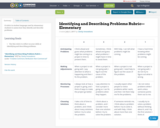
A rubric in student language used by elementary students to assess how they identify and describe problems.
- Subject:
- Life Science
- Mathematics
- Physical Science
- Social Science
- Material Type:
- Assessment
- Date Added:
- 07/03/2017

A rubric in student language used by elementary students to assess how they identify and describe problems.
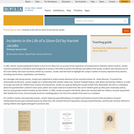
This collection uses primary sources to explore Incidents in the Life of a Slave Girl by Harriet Jacobs. Digital Public Library of America Primary Source Sets are designed to help students develop their critical thinking skills and draw diverse material from libraries, archives, and museums across the United States. Each set includes an overview, ten to fifteen primary sources, links to related resources, and a teaching guide. These sets were created and reviewed by the teachers on the DPLA's Education Advisory Committee.
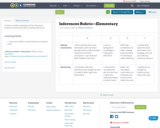
A rubric in student language used by elementary students to assess their skills at making inferences.

These resources are for enabling children to think critically about health claims and make well-informed choices. They include a combined comic and text book, an exercise book, and a teachers' guide. The resources have been tested in an experiment with over 10,000 children, which showed they improve children's ability to assess health claims. They have been translated to 12 languages.
The comic book is also available as a set of videos with professional audio narration.

How we design professional development greatly impacts outcomes. This module addresses the incorporation of critical thinking and critical reflection skills into professional development sessions, with sections on cultural competency, incorporating participant self-assessment at the end of sessions using rubrics, and instructional design considerations when developing in-person sessions or online learning. It is intended to give an entry into these topics for anyone providing training in any setting.
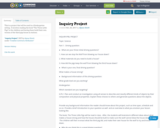
This is a project that will be used in a Kindergarten setting . It involves reading the book "The Three Little Pigs" to the children and having them build their own version of the third pigs house in stations.

Interactive learning is becoming increasingly important as the world and its demands continue to change. This approach to education provides many advantages for both students and educators. By promoting engagement, supporting collaboration, personalizing learning experiences, utilizing technology, and developing critical thinking skills, this educational method equips students with the necessary tools to succeed in the 21st-century workforce. Please email me at interactivelearning2288@gmail.com to receive a copy of my book that contains all 14 units. Please allow me several days to respond.
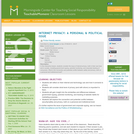
In this interactive lesson, students consider the issue of internet privacy, both in their own lives and in society, including government spying, parental monitoring, and corporate tracking of consumers. What is the connection and potential conflict between safety and privacy, both on a personal and institutional level?
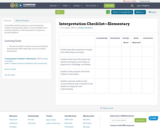
A checklist used by teachers to assess elementary students’ interpretation skills. It can be modified to be used by students as a self-assessment or by peers to provide feedback.

A brief introduction to art history, and what it means to learn to look and think critically. The first of two essays.

This lesson plan guides educators in teaching about capitalism. Capitalism impacts people because the distribution of resources and wealth is uneven. Capitalis hold significant power over laborers and the working class and wield their power to threaten wages, working conditions, and basic necessities. Learning to identify and name capitalism, as well as its consequences and implications, is an important foundation for 21st century critical thinkers.
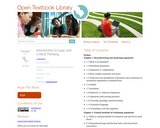
This is an introductory textbook in logic and critical thinking. The goal of the textbook is to provide the reader with a set of tools and skills that will enable them to identify and evaluate arguments. The book is intended for an introductory course that covers both formal and informal logic. As such, it is not a formal logic textbook, but is closer to what one would find marketed as a critical thinking textbook. Downloadable as a pdf file.
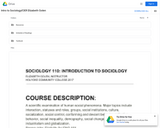
Sociology enables us to make observations and insights into the social world. Our aim in this course is to develop a sociological perspective by addressing a series of broad questions regarding the society we inhabit. We will work together throughout the semester to analyze and develop a deeper understanding of the social world through the lens of sociological inquiry. Along the way, you will become familiar with the substantive topics within the field of sociology. We will also begin to develop critical thinking skills with a focus of application to the real world and current events.
Pedagogy: This class is web-enhanced and therefore has substantial online content. To encourage participation and increase ease of access for the maximum number of students, participants can complete assignments online instead of physically attending class without any negative repercussions.

This collection uses primary sources to explore the invention of the telephone. Digital Public Library of America Primary Source Sets are designed to help students develop their critical thinking skills and draw diverse material from libraries, archives, and museums across the United States. Each set includes an overview, ten to fifteen primary sources, links to related resources, and a teaching guide. These sets were created and reviewed by the teachers on the DPLA's Education Advisory Committee.
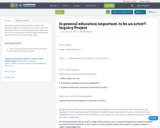
Students are given the opportunity to explore and dictate the importance of general education in the Arts. Allowing students to critically think and put their views into works in a persuasive manner, while assisting their argument with the prior knowledge of art.

This collection uses primary sources to explore Jacksonian democracy. Digital Public Library of America Primary Source Sets are designed to help students develop their critical thinking skills and draw diverse material from libraries, archives, and museums across the United States. Each set includes an overview, ten to fifteen primary sources, links to related resources, and a teaching guide. These sets were created and reviewed by the teachers on the DPLA's Education Advisory Committee.
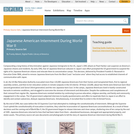
This collection uses primary sources to explore Japanese American internment during World War II. Digital Public Library of America Primary Source Sets are designed to help students develop their critical thinking skills and draw diverse material from libraries, archives, and museums across the United States. Each set includes an overview, ten to fifteen primary sources, links to related resources, and a teaching guide. These sets were created and reviewed by the teachers on the DPLA's Education Advisory Committee.
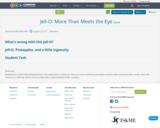
Students are tasked with designing their own experiment to discover why you cannot add fresh pineapple to Jell-O. After analyzing their results, they will construct a CER that will be used to assess their understanding of the concepts.
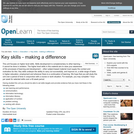
This unit focuses on higher level skills. Skills development is complementary to other learning - it cannot be done in isolation. The higher level skills in this material aim to raise your awareness of the processes of learning and development - other subject-based material must supply the context and motivation for this. Key skills underpin the ability to carry out successfully, and improve on, a wide range of tasks in higher education, employment and wherever there is a continuation of learning. We hope that you will study this unit over a period of time in conjunction with a course or work situation. For example, you may complete 1 hour per week for selected skills over a 40-week period.
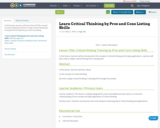
In this lesson, learners will learn about
(1) The concept of critical thinking:
(2) How to adapt critical-thinking in everyday life through the pros and cons listing,